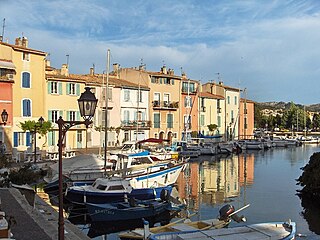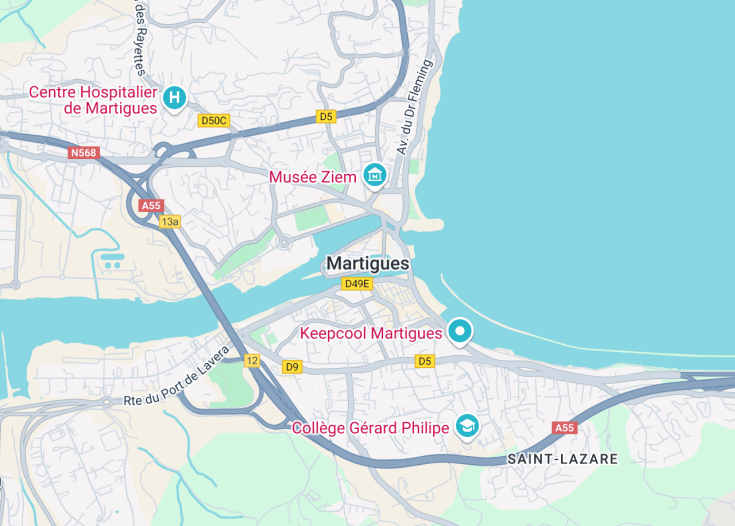Martigues, often referred to as the “Venice of Provence”, straddles both banks of the canal that links the Étang de Berre to the Mediterranean Sea. This charming town is renowned for its picturesque canals, colorful facades, and vibrant fishing boats. The unique blend of cultural heritage and natural beauty makes it an enchanting destination for visitors seeking both relaxation and a rich, historical experience. Martigues boasts a thriving arts scene, regional cuisine, and several historical sites, offering a comprehensive Provencal experience.
Explore the quaint canals of Martigues by boat for an immersive experience of its serene waterways and picturesque architecture.
Visit during the summer Festival of Martigues to enjoy folk dancing, music, and traditional crafts that highlight the region’s rich cultural heritage.
Top things to do & see in Martigues
Select the following sights and activities to discover best tickets and tours available in Martigues.
Martigues: The Venice of Provence
| Country | France |
| Time in Martigues | GMT+1 |
| Language spoken | French |
| Population | 48,769 (as per latest data) |
| Currency | Euro (€, EUR) |
| Airports |
|
Martigues, often referred to as the Venice of Provence, captivates visitors with its charming canals, picturesque bridges, and colorful houses. Situated in the South of France, this idyllic town offers a striking contrast between its vibrant city life and the tranquil natural scenery that surrounds it.
The charm of Martigues lies in its three distinct yet picturesque districts connected by bridges over the Canal de Caronte. The town’s compact size enriches its intimate and welcoming atmosphere, making it perfect for explorations by foot. The historic district, known as Île, is particularly noteworthy with its labyrinth of narrow streets, opening up to expansive views of the canal.
The cultural heritage of Martigues is preserved in its museums and galleries that showcase traditional Provençal and contemporary art. The Ziem Museum, located by the waterfront, houses an impressive collection of artworks and historical artifacts that tell the story of the region’s maritime and fishing history.
Festivals and events are central to the social fabric of Martigues. Throughout the year, the town vibrates with the energy of numerous cultural happenings such as the ‘Fêtes de la Mer,’ where maritime traditions are celebrated, and the ‘Venetian Carnival,’ which transforms the town with ornate masks and costumes reminiscent of its Venetian counterpart.
Martigues also serves as a culinary retreat with an emphasis on seafood and local ingredients. The town’s restaurants offer a taste of Mediterranean cuisine, highlighted by the local Bouillabaisse, a traditional fish stew that epitomizes the richness of coastal French cooking.
Where is Martigues?
Martigues is strategically located on the Mediterranean coast in the South of France, making it an ideal station between historic cities and serene landscapes.
Distances:
| Route | Distance by car | Time by car |
| From Marseille | 33 km | 40 minutes |
| From Avignon | 100 km | 1 hour 20 minutes |
| From Nice | 206 km | 2 hours 15 minutes |
What is Martigues famous for?
Martigues is renowned for its picturesque canals and vibrant waterfront houses that reflect its nickname ‘The Venice of Provence’. Its rich blend of historical charm and modern day culture makes it a compelling destination for tourists and art enthusiasts alike.
History
Prehistory to Medieval Times
Martigues, often referred to by the moniker “Venice of Provence,” boasts a rich history that begins in the prehistoric period. Archaeological evidence points to early inhabitants in this area, drawn by its favorable maritime location. Over time, the advantageous coastal position fostered a vibrant fishing and trading settlement in the region. By the medieval era, Martigues comprised three distinct quarters across different islands, which were eventually united under a single causeway in the 17th century. This unique geographical layout contributed to its picturesque ambiance and strategic significance.
17th Century – Industrial Influence
The 17th century marked the causeway unification of the three islands, which ignited urban expansion and further economic development. By then, Martigues was a significant trading post that attracted various merchants and artisans. Its local economy started to diversify from predominantly fishing to include salt production and later, oil processing and petrochemical industries in the surrounding areas as the industrial revolution took hold in France. These industries propelled the town into economic prominence but also introduced environmental and social challenges that shaped its modern development.
20th Century to Present
During the 20th century, Martigues transitioned from its industrial roots towards becoming a cultural and tourist hub. The town has made considerable efforts to preserve its historical sites and enhance its cultural heritage, promoting it as a major attraction. Modern day Martigues is a fusion of its historical past with contemporary influences, featuring restored architectural sites, vibrant cultural festivals, and a bustling marina that attract visitors from around the globe. The town’s commitment to art and culture is evident in its many galleries, museums, and music events that celebrate both its history and the dynamism of the present day.
Visit Martigues
What to see and do in Martigues
Martigues offers a plethora of attractions that make it a must-visit destination in the South of France. The town is renowned for its scenic canals and brightly colored houses that echo the charm of Venice. Visitors can explore the:
- Historical district of L’Ile, known for its quaint bridges and mirrored waterways.
- Baroque-style Church of Sainte-Madeleine, with its impressive artwork and architecture.
- Ziem Museum, which showcases both fine arts and the history of Martigues.
- Local markets that offer a taste of regional specialties and handcrafted goods.
Boat tours along the canals offer a unique perspective of the city’s maritime heritage and its picturesque surroundings.
Festivals and Events in Martigues
Martigues is vibrant with cultural festivities throughout the year. Notable events include:
- The Venetian Parade in Spring, where the canals blossom with color and costume.
- The Festival of Martigues in July, celebrating folk music and dance from around the world.
- The Christmas market in December, a festive occasion with local crafts and seasonal treats.
These events reflect the lively spirit and rich traditions of Martigues, making any time a good time to experience its cultural vibrancy.
Best time to visit Martigues
The ideal time to visit Martigues is between late spring and early autumn when the weather is most pleasant—perfect for enjoying outdoor activities and festivals. However, those interested in specific cultural events should plan their visit around the festival dates to fully experience the local traditions and festivities.
Is Martigues worth visiting?
Martigues offers a rich blend of history, culture, and scenic beauty, making it a noteworthy destination in France. Its unique ‘Venetian’ architecture and vibrant cultural scene provide a captivating experience. However, visitors looking for a quiet getaway may find it less appealing during peak festival periods or summer when the town is most crowded. Transport options within the town are also limited, focusing more on pedestrian routes. Nevertheless, for those appreciating art, history, and picturesque landscapes, Martigues holds considerable charm and is definitely worth a visit.










